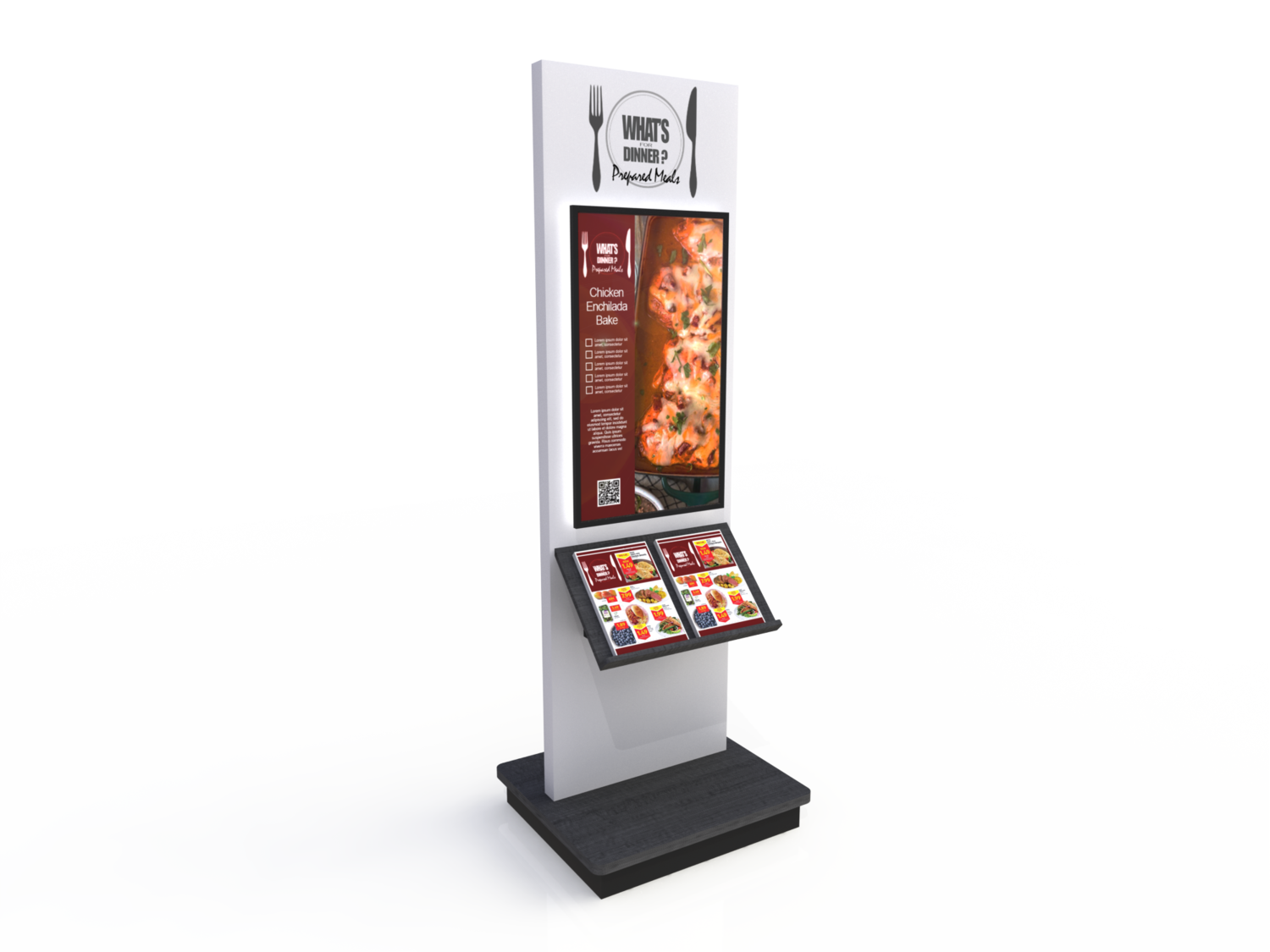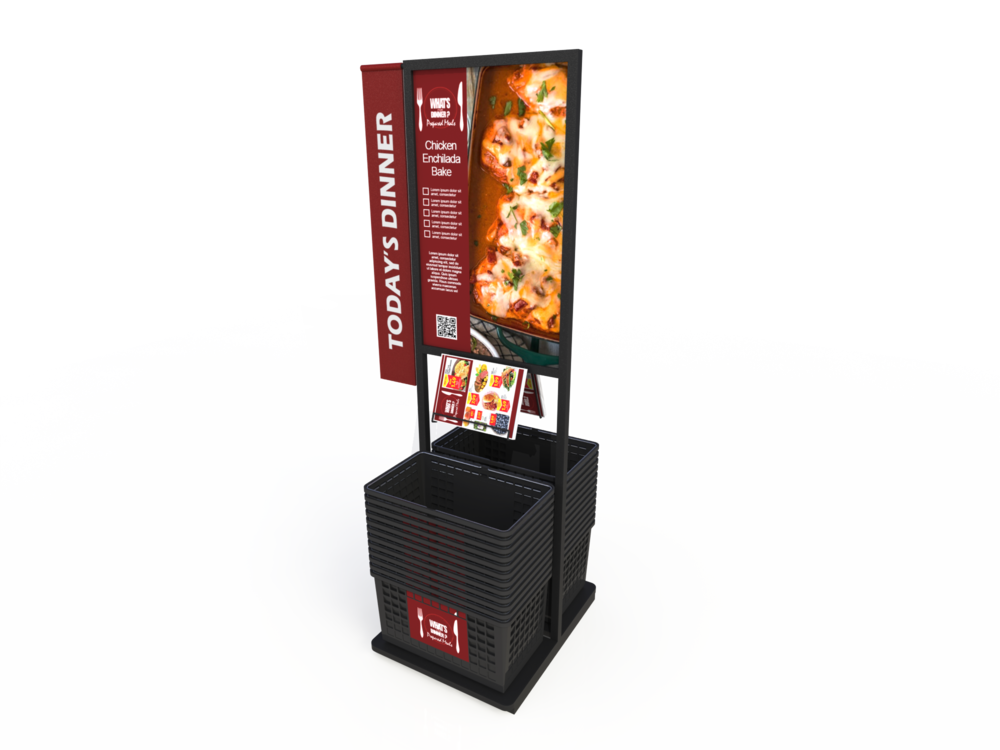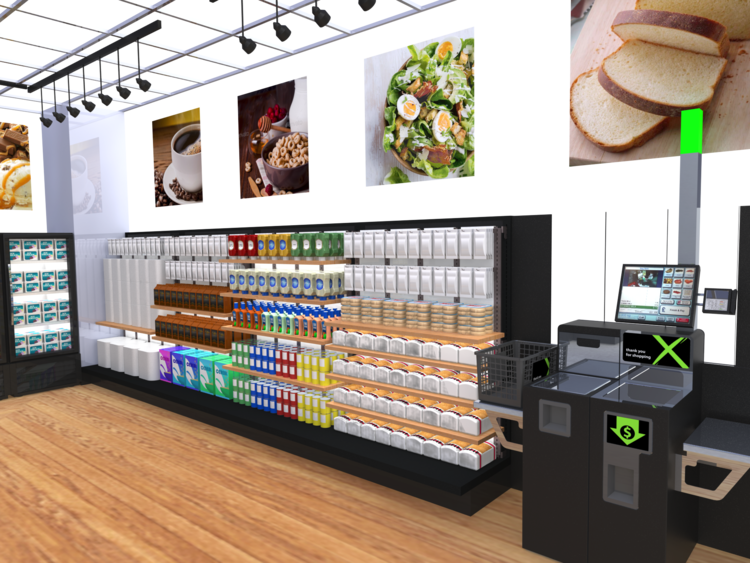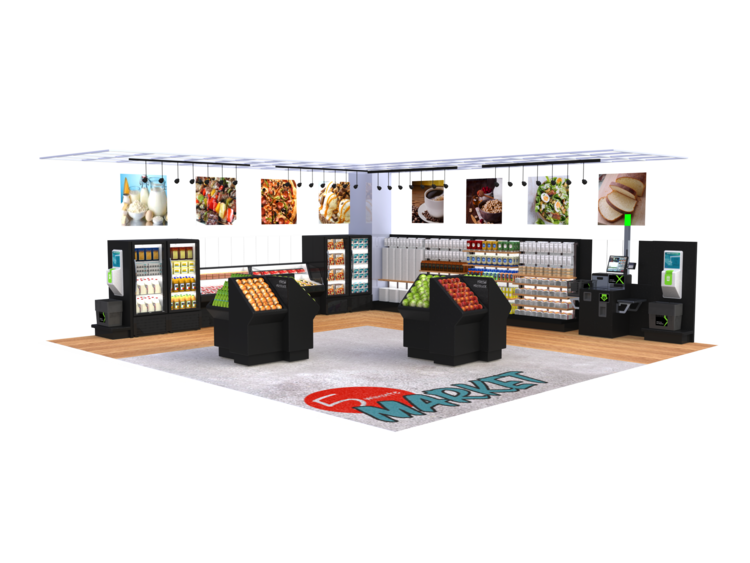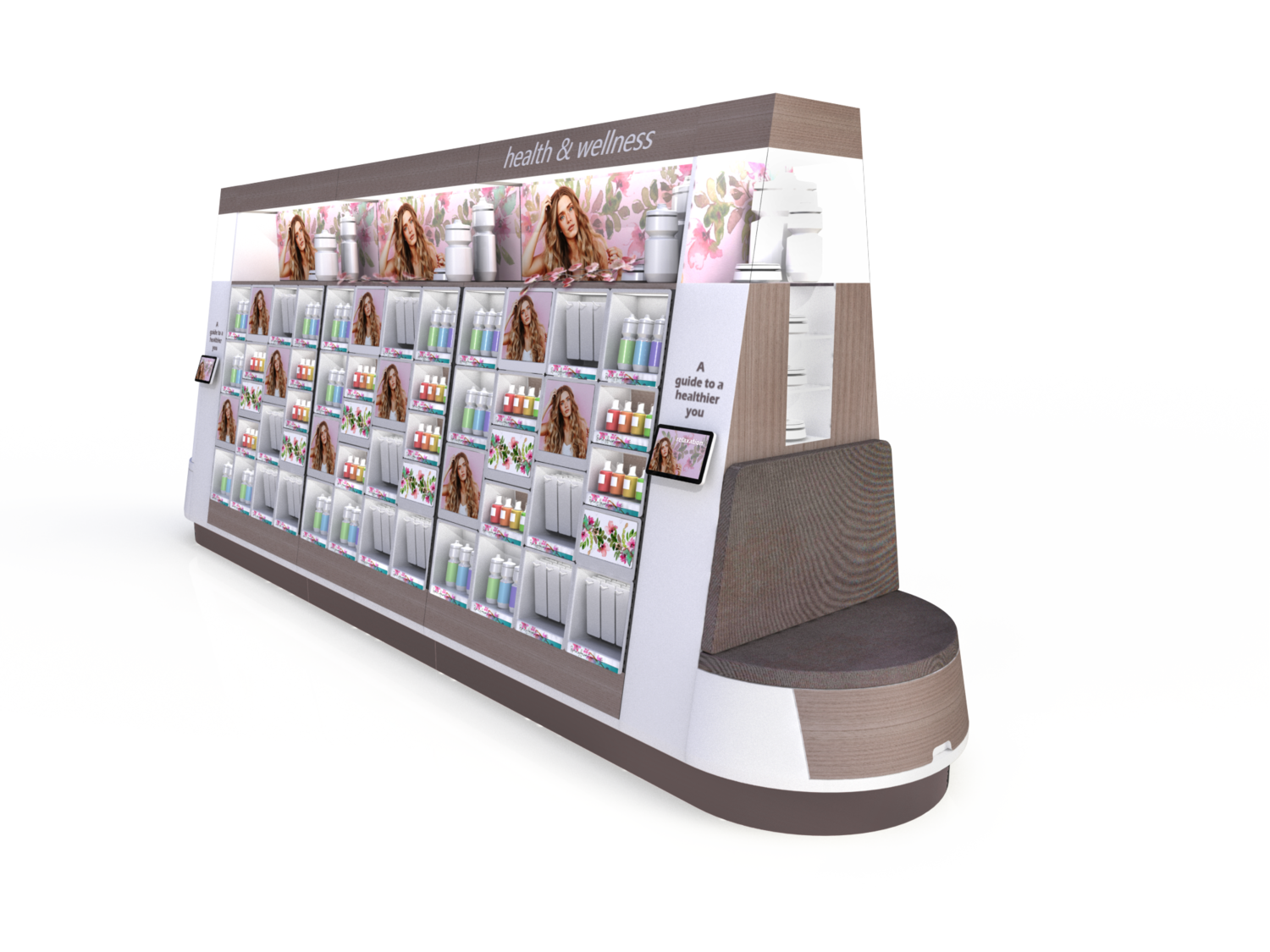Grocery Retail Trends & Fixture Innovation Shaping 2025
Design-led strategies transforming the way people shop, move, and engage in-store
From the early pandemic pivots to today’s increasingly hybrid expectations, grocery retail is in the midst of a high-stakes reinvention. Consumers are shopping differently. Retailers are rethinking footprints. What worked five years ago feels outdated today—and what works now is built to flex.
At AXIS, we work alongside grocery retailers and CPGs who want more than fill-the-space solutions. They want smarter merchandising, faster rollouts, and in-store experiences that actually influence buying behavior.
Here’s what’s driving results in 2025—and how fixture design is leading the charge.
1. From Panic to Permanence: Shopper Habits That Stuck
Consumers may have returned to in-store shopping, but they’ve brought their digital expectations with them. Buy Online, Pick Up In Store (BOPIS) is now a baseline feature—offered by 86% of top grocery retailers as of Q1 2025, up from just 27% in 2019 (Supermarket News, 2025).
What’s changed is the frictionless blending of e‑commerce with physical retail. Stores are no longer just aisles—they’re experiential micro-hubs, fulfillment centers, and loyalty platforms.
Fixture tip: Integrate wayfinding graphics, dynamic signage, and branded BOPIS pickup zones into permanent floorplans as a core design element rather than an add-on.
2. The Rise of Smart Displays: Digital Meets Physical
Today’s grocery store isn’t just smart behind the scenes. In 2025, it’s smart at the shelf.
Retailers are deploying interactive displays, shelf-level screens, and even AR-enabled kiosks to drive education, personalization, and decision-making. These tools don’t just deliver information—they shape conversion.
Recent studies show digital signage boosts purchase likelihood of featured products by 8.1 %, with reported overall sales uplift as high as 31.8 % in retail environments (Retail Media World). In grocery specifically, shoppers spend 30 % more time browsing when digital displays are deployed, and brands report up to 33 % increased sales using in-store screens (Digital Signage Today).
Fixture tip: Embed digital screens, touchscreen kiosks, and QR-activated displays into your fixture packages to guide decisions—and lift conversion around high-margin SKUs.
3. Local Sourcing Becomes a National Strategy
What started as a pandemic-era solution has become a lasting expectation: shoppers want local. In fact, 64% of grocery consumers in 2025 say they actively seek out local products—and 73% say they’d pay more for them when clearly labeled and merchandised with purpose (FMI Grocery Shopper Trends).
Modern grocery design has responded by embedding “farmers’ market” moments inside permanent grocery footprints. Whether it’s endcap storytelling, rotational vendor bays, or shop-in-shop experiences, local now has a permanent seat at the merchandising table.
Fixture tip: Use modular display platforms that rotate with the season or region, allowing grocery brands to flex their assortments without expensive resets.
4. Category Reinvention: Health, Wellness & Grab-and-Go Zones
Functional food, supplements, and wellness categories have exploded across grocers since 2023. Retailers like Hy‑Vee and Whole Foods have led the way, but even regional players are embedding wellness corners, nutrition kiosks, and grab-and-go coolers near entrance paths to meet fast-moving demand.
NIQ’s 2025 Global Wellness Report shows that 55% of consumers are willing to spend more than $100/month on nutrition, wellness, and self-care products, a clear signal that these categories are driving store choice and will likely be permanent fixtures in store plans for years to come (NielsenIQ, “2025 Global State of Health & Wellness”).
These evolving categories require fixtures that can flex across refrigeration, security, branding, and education—and still feel unified. This is where AXIS' hybrid creative-production model shines: we bridge the experiential with the functional, ensuring shopper flow and brand cohesion from shelf to cart.
5. Omnichannel Integration Is Now the Expectation
2025 is the year omnichannel grocery stops being a buzzword—and becomes the standard shopper expectation. Whether it’s in-store discovery, app-based wayfinding, or delivery lockers embedded in-store, brands must align physical and digital touchpoints seamlessly.
AXIS fixtures now frequently include embedded QR codes, NFC chips, and digital price integration, not only for ease but for insight. These tools don’t just serve the customer—they power your retail media network and shopper analytics platform behind the scenes.
Strategy tip: Don’t silo your store design, e‑comm platform, and marketing strategy. Unify them. Let your fixtures act as the connective tissue.
To further carry the idea of localization throughout the store, complementary displays, fixtures, and merchandising elements can be setup throughout that feature items shown in the market in their associated departments. For example, the D’Guy-O homemade salsa brand may make an appearance in center store alongside Frontera, Pace, and Tostitos salsas. As with all proposed units in these ideas, the graphics are easily changed and the displays are easily assembled and scaled. Grocers have max control on what goes where and when.
Grocery Retail Inspiration Gallery
Conclusion: What’s Next for Grocery Starts With Smarter Fixtures
Retailers are being asked to do more with their space. We help them do it well.
At AXIS, we don’t just build fixtures—we build smarter retail systems. Systems that flex. That scale. That turn your footprint into something faster, sharper, and more shopper-focused.
If your store strategy is shifting, the right partner can help you move with it.
Let’s build what’s next.

